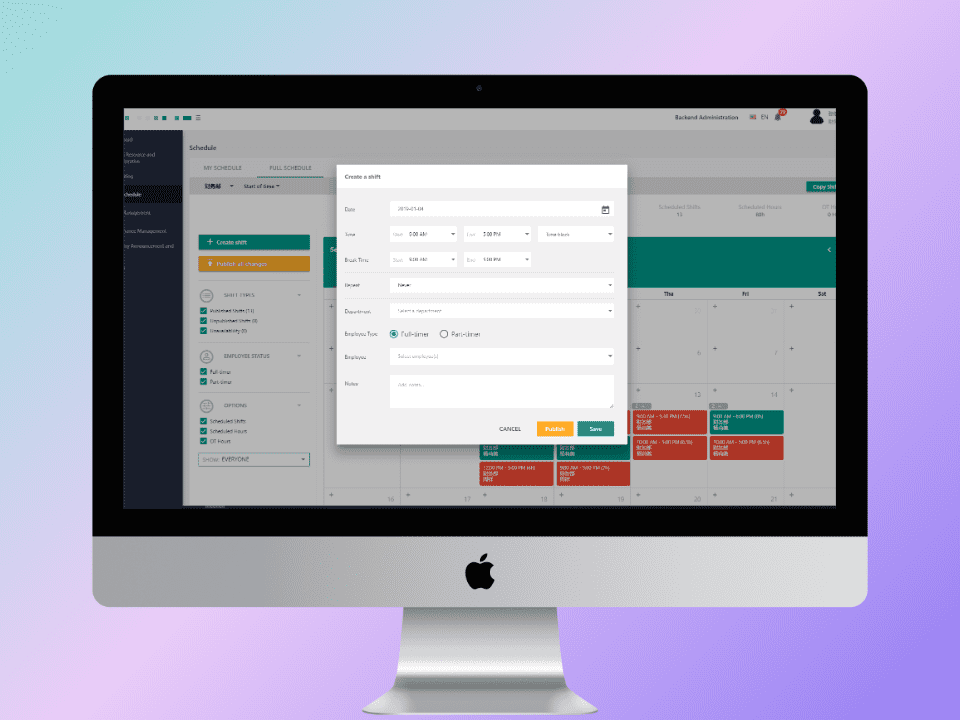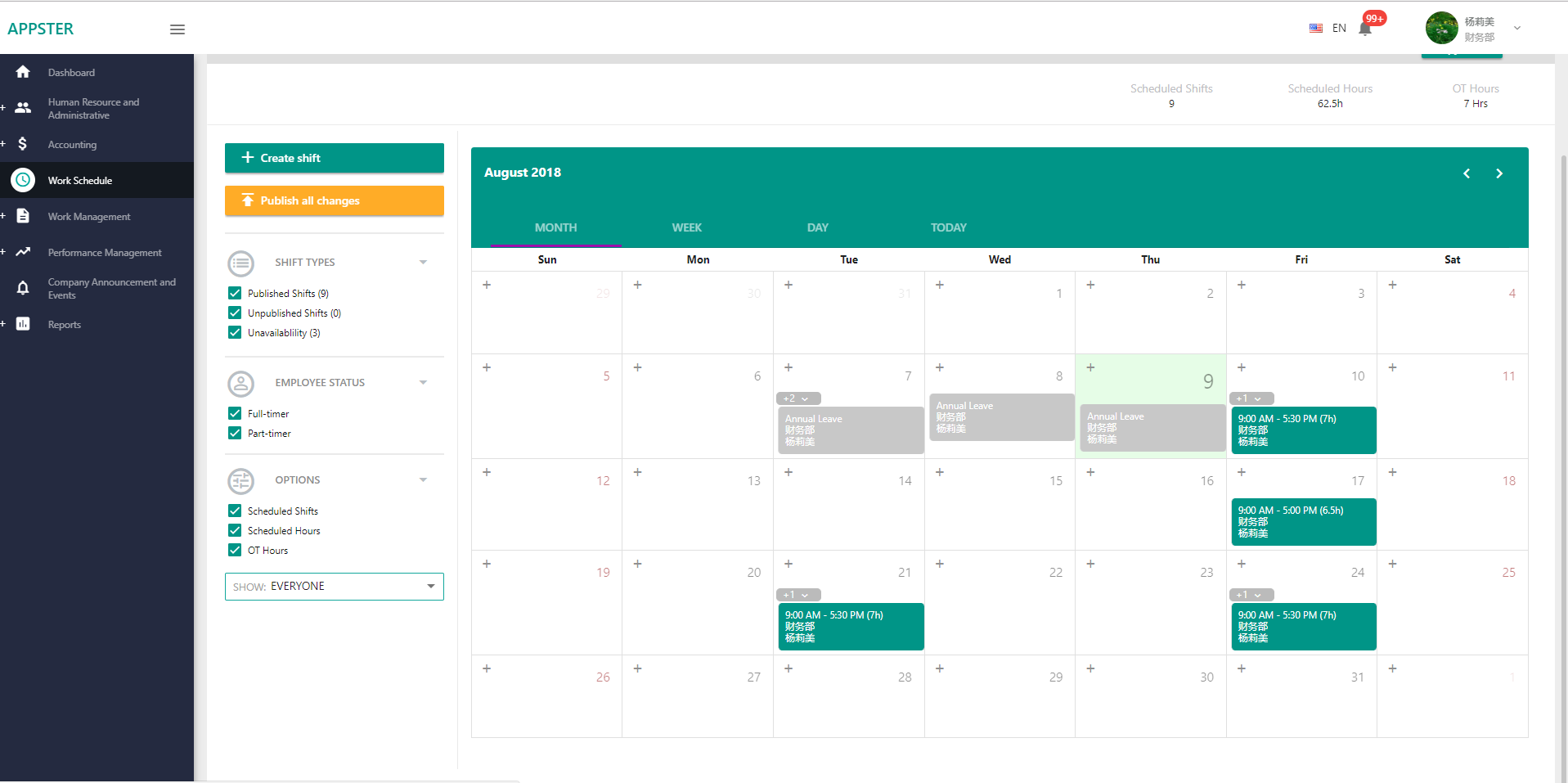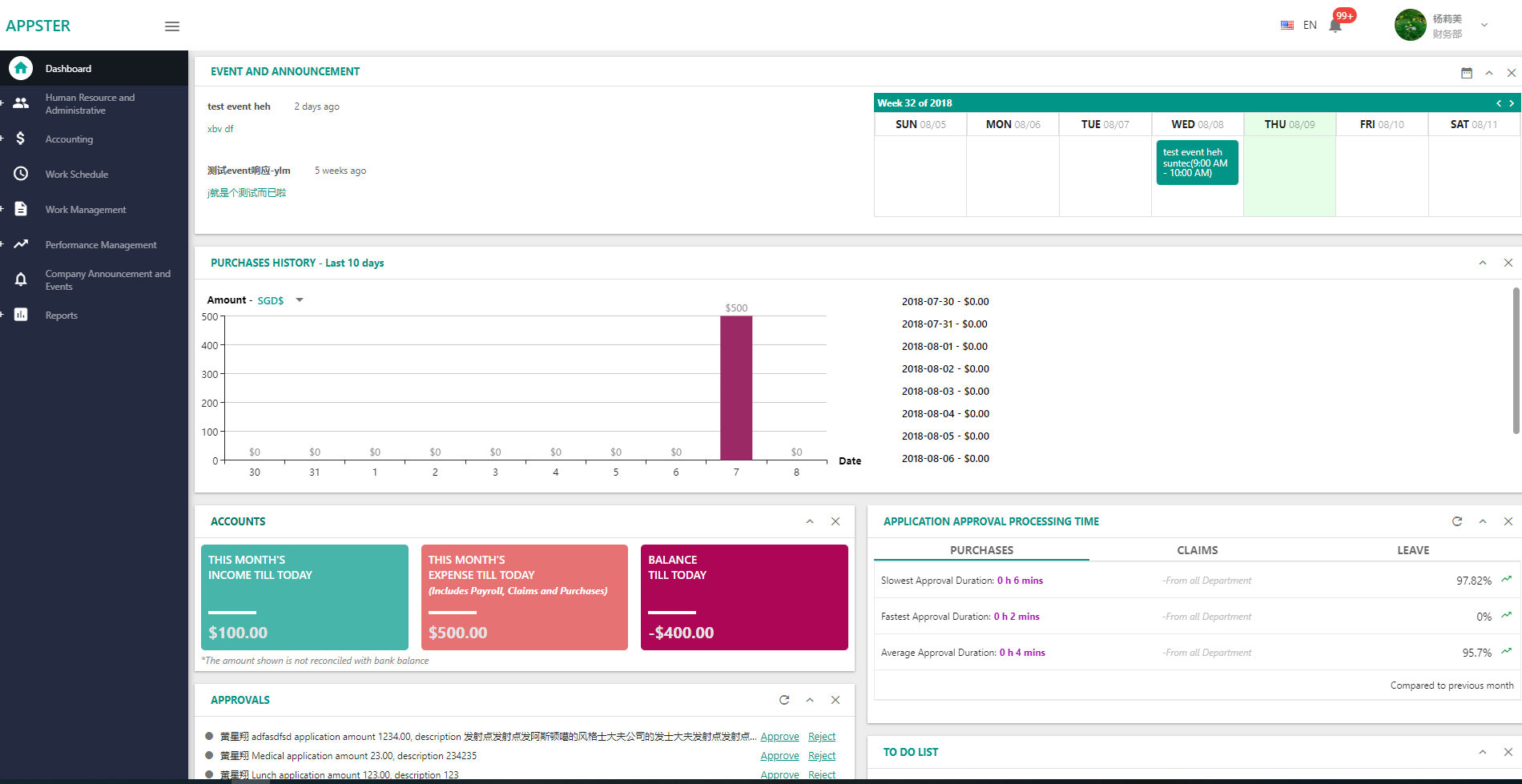Client Overview

This particular client is a multinational corporation based in Singapore. They specialize in mobile app development and have employees and offices in multiple countries. In order to better serve their customers in various countries, they have established local branches and offices. However, due to the fact that their employees are spread across different countries, each with its own set of public holidays, cultural practices, and legal requirements, it has been challenging for them to find a ready-made OA system that can effectively address their specific needs in terms of staff attendance, salary management, and vacation management.
After careful consideration, the client has made the decision to develop and customize their own OA system to meet their unique company management needs and they chose Nova to be there software development provider.
Screenshots of the OA System
Project Progress
 Development Phase
Development PhaseThis project is divided into three phases.
The first phase involves completing the prototype design and requirements document, which serve as the foundation for subsequent work. Both the client and Nova are deeply involved in this phase, with Nova primarily responsible for presenting the work to the client for confirmation. This helps the client save a lot of time.
We consider requirement confirmation to be of utmost importance. If there are any deviations in the understanding of the requirements during this phase, it can lead to the failure of the entire project. Therefore, we proceed with caution and take great care in this stage.
In the second phase, the main development work is completed, and the produced software is promptly demonstrated to the client. After conducting internal testing, the software is submitted to the client for quick adoption and feedback collection.
In the third phase, based on user feedback during usage, the client adds some additional requirements, initiating a new phase of work. After completion, the project is successfully deployed and put into use.
 Development Team Information
Development Team InformationThe project has a relatively long duration and is developed using a front-end and back-end separation approach. Zhang Junchen has been managing the back-end development throughout the project as Project manaer.
The project is staffed with three back-end developers, three front-end developers, one full-time tester, and one project manager.
 Development Tools and Environment
Development Tools and EnvironmentBack-end API Development Tools: Eclipse (Oxygen.2 Release 4.7.2), JDK 1.8
Front-end: Visual Studio Code (node.js 6.11.4, npm 5.6.0)
Testing Server Environment (On-premises): Windows 10 64-bit Education Edition, Intel(R) Core(TM) i5-2400 CPU 3.10GHz, 8.00GB RAM
Testing Server Environment (Cloud): Windows Server 2008 R2 Standard Service Pack 1 64-bit, Intel(R) Xeon(R) CPU E5-2682 v4 2.50GHz, 8.00GB RAM
Production Server Environment: CentOS 7
Web Container: Apache Tomcat 8.5
 Some Technologies Used in the Project
Some Technologies Used in the Project- PDF Export (Backend)
For backend PDF export, the project uses the JasperReport library. The file templates are generated using the iReport tool, and the JRPdfExporter class is used to export the PDF files. - Email Sending
The project uses the javax.mail package for sending emails. The basic usage involves utilizing classes such as Address, Message, and Session as documented. - Workflow
The project utilizes the Activiti workflow engine for managing workflows. - Scheduled Tasks
The Quartz package is used to execute scheduled tasks in the project. - Front-end Components
The project utilizes various front-end components, including:
- Language switching: Translate
- Charting: Echarts
- File upload: ng2-file-upload
- Page screenshot: html2canvas
- PDF download: jspdf
- Color picker: ngx-color-picker
- Role-based permissions: ngx-permissions
- Scrollbar: perfect-scrollbar
 Project Management Experience
Project Management Experience- 1) Before each iteration begins, the team collectively learns and understands the prototype or requirements document to ensure that everyone understands the overall functionality of the system, rather than just focusing on their individual responsibilities. This ensures a consistent understanding among team members and provides a foundation for communication in areas that require collaboration. If there are any ambiguities, they are listed and confirmed with the client before further discussion among the team.
- 2) In addition to the prototype and requirements understanding meetings before starting each iteration, each developer needs to carefully understand the task description and clarify what needs to be done, what scope it affects, what dependencies it has, and whether there are any uncertainties (not mentioned in the prototype or requirements document). They also evaluate if the allocated time is sufficient for the task.
- 3) After completing the development, developers need to perform self-testing. The project has established some general self-testing rules, which are tailored and enhanced based on the project's specific requirements and circumstances.
- 4) After a certain period of project development (usually on a weekly basis), a results demonstration meeting is held. Each team member demonstrates the functionality they have completed. This provides an overview of the project progress, allows evaluation of whether the implemented features align with the prototype or requirements document, and often reveals bugs during the demonstration, which serves as a motivation to improve development and testing quality. The OA project has performed well in this aspect.
- 5) After completing a phase of the project (usually on an iteration basis), a retrospective meeting is held to review what was done well and what could be improved in the previous phase.
Overall, the project's process management is well-organized, resulting in few issues with deliverables.
What the Client Get from This Project
- Workflow is clearer and more suitable to the actual needs of customers.
- Statistical information makes the boss better understand of financial and personnel data.
- Realize intelligent office by introducing workflow engine and automatic approval process.
Business Model








